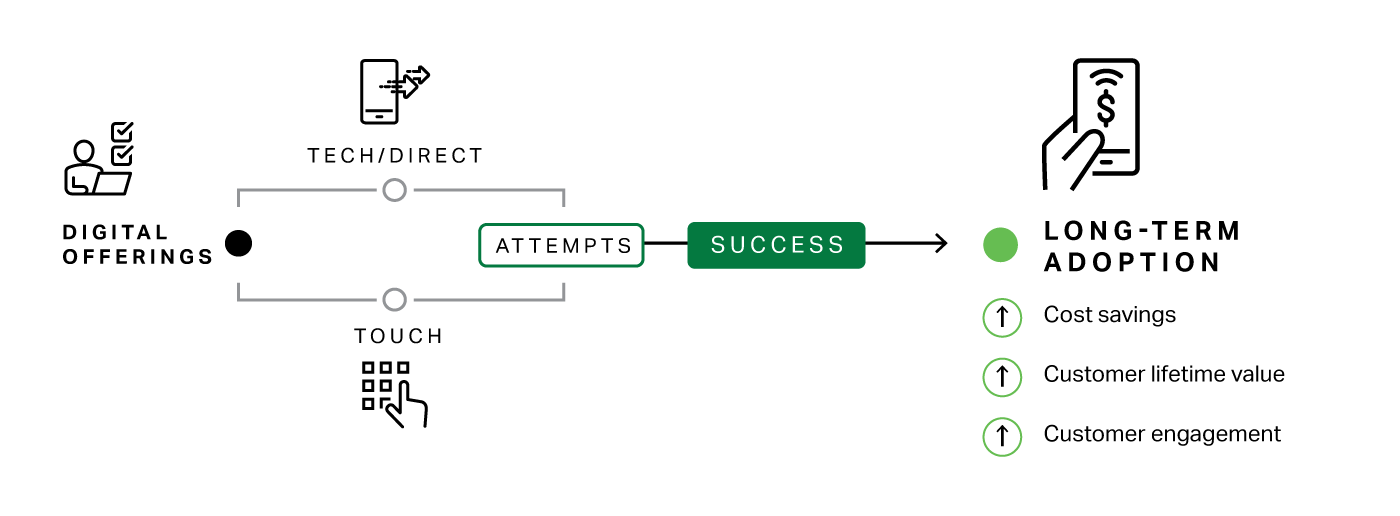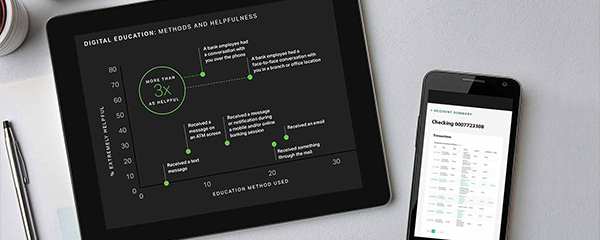The following is an excerpt from our paper Creating More Digital-Forward Customers, written to help financial institutions improve digital adoption among customers.
Just as availability does not equal adoption, attempts do not equal success.
Customers who experience unsuccessful digital attempts -- meaning, they try to use online or mobile banking and are not able to complete the task they intended to -- often turn to a human channel for assistance. This erodes the customer experience and drives up the cost to serve them.
To achieve widespread digital adoption, banks must facilitate a high percentage of attempts and ensure that those attempts are successful. Success is starting and completing the desired action in the given digital channel. In other words, banks must increase their customers' digital proficiency.
Gallup helps its clients calculate the attempts-proficiency ratio with the TrueDigital Quotient -- the percentage of actions that customers successfully complete entirely in a digital channel.
% of digital attempts x % of successful attempts (proficiency) = TrueDigital Quotient
For example, let's say that 100 bank customers opened checking accounts. Fifty customers opened their account via a human channel, while 50 attempted to open their account via mobile banking. Of the 50 customers who attempted via mobile banking, only 25 were successful -- the other 25 sought a human channel to finish opening the account. This results in a TrueDigital Quotient of 25% [50% were digital attempts (50 out of 100 customers) x 50% that were successful/proficient (25 out of 50 customers) = 25%] -- 25% of the 100 new checking account customers used digital channels to open their account.
For complex actions -- such as opening an account or solving a problem -- the leading banks have a TrueDigital Quotient of over 50%, while the lowest performers see less than 10%.
Just like you know the account number for every customer, you should know the TrueDigital Quotient for every customer as well and track its growth. Doing this allows the human channels to be proactive with initiating conversations with customers who experience unsuccessful attempts. In other words, banks must equip front-line employees with the intelligence to best encourage customers to try -- and try again.
Gallup helps its clients calculate the attempts-proficiency ratio with the TrueDigital Quotient -- the percentage of actions that customers successfully complete entirely in a digital channel.
This may be through cobrowsing technology or walking the customer through the process on their own device in the branch. Whatever the avenue, encouraging attempts and increasing proficiency must be an ever-present expectation in human channels. As customers successfully attempt and complete more actions digitally, they are more likely to adopt digital-forward actions and preferences for the long term -- which lowers the cost to serve, increases customer lifetime value and bolsters customers' engagement (i.e., emotional attachment) with their financial institution.
Employees must be digitally proficient and consistently encourage customers to try digital … and try again.

Custom graphic. Digital offerings, tech/direct, touch attempts lead to success and long-term adoption: cost savings, customer value and customer engagement all increase.




